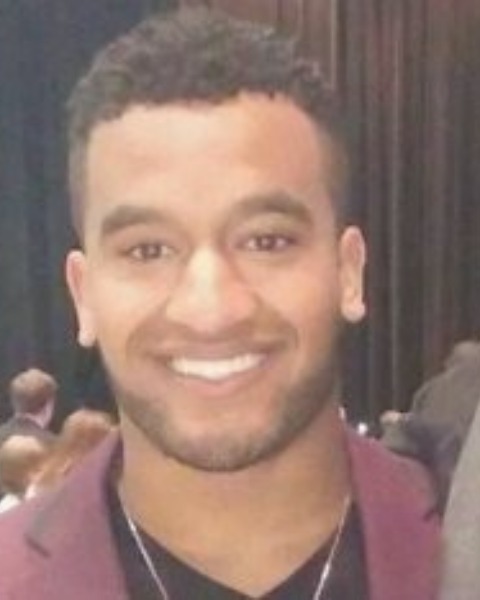Cardiovascular Engineering
Cardiovascular Engineering - Poster Session E
Poster T11 - Systematic co-culture of iPSC-CM and iPSC-SN to promote co-maturation in vitro
Saturday, October 26, 2024
10:00 AM - 11:00 AM EST
Location: Exhibit Hall E, F & G

William G. Terrell, Jr., PhD
Graduate Research Assistant
SUNY Binghamton
Binghamton, New York, United States- TH
Tracy Hookway, PhD (she/her/hers)
Assistant Professor
Binghamton University, New York, United States
Presenting Author(s)
Primary Investigator(s)
Introduction:
Introduction: The cardiac microenvironment is a complex system of multicellular interactions that enables proper heart function. In the native heart muscle, sympathetic neurons (SN) and parasympathetic neurons (PN) modulate the beat rate of cardiomyocytes (CM) to maintain homeostasis. Pluripotent stem cells can differentiate into CM and SN. However differentiated CM are fetal-like with a high beat rate, and lack mature sarcomeric structure. Recent reports of co-cultured pluripotent CM/SN pairs have reported physiological changes in the SN (increased upstroke velocity and decreased decay time). However, interpretation of these results are complicated by the differences in the co-culture parameters (age of cells, length of culture, etc.) between studies. The goal of this work is both to improve the differentiation yields of sympathetic neurons and to establish a controlled platform for CM/SN co-culture and to ultimately investigate to what extent the stage of development and co-culture duration promote CM/SN co-maturation.
Materials and
Methods: Materials and
Methods: Human iPSC-CM were differentiated from WTC11 iPSC with an encoded GCaMP indicator. Sequential Wnt activation, Wnt inhibition, and supplementation with insulin yielded CM that spontaneously contracted (7-15 days). SN were differentiated from WTC11 iPSC through sequential TGF-β inhibition, caudalization with Wnt/Retinoic Acid, dorsalization with BMP4, and maturation with neurotrophic factors (NT-3, GDNF, and NGF). After establishing a basic protocol the initial cell seeding density, RA concentration, and BMP concentration were optimized to investigate the effects on SN efficiency. Phox2B, MAP-2, TH/vChAT were quantified after immunostaining. For co-culture studies, CM/SN were co-seeded (3:2 ratio, CM: 90k cells/cm2 SN: 60k cells/cm2) and cultured for 21 days in co-culture media (1:1 mix of CM Media and SN Media). CM and SN were maintained in both media types separately as controls. Co-culture morphology was observed daily with phase microscopy, media was changed every 3 days, and calcium imaging was performed after 14 days. Video recordings (20 sec) for each group (n=3) were obtained and beats per min (BPM) were measured. After 21 days the co-culture plate was immunostained for cTnT, NF, and Phox2B. Images were taken on a Nikon Eclipse Ti2-E Microscope.
Results, Conclusions, and Discussions:
Results: After 10 days, clear neuronal populations were evident, and by D14, SN self-assembled into neuronal clusters with thick bundle projection structures. A subset of neurons (45±10%) were identified as putative-SN (Phox2B+/NF+). After seeding the co-culture, CM resumed beating and SN projections re-established within 48 hours. GCaMP calcium flux activity was observed in all experimental groups. At D21 the spontaneous beat rate of CM-control was 44 BPM, and spontaneous firing rate of SN-control was 21 flux events/min. Beat rate in the co-culture was significantly lower than CM-control (19 BPM p < 0.001) D21 images confirmed that CM (red: cTnT+) and SN (green: NF+) co-localized into islands connected by neuronal extensions (Figure 1). Within the islands SN remained closely associated in ganglion-like clusters. Neuronal extensions projected only towards the SN clusters/CM islands. Extended SN projections remained either tight (^) or loose (#) after reaching their targets. Interestingly, SN projections had minimal interaction with NF-/ cTnT- cells within the wells (*).
Discussion: Both SN and CM reorganized within the co-culture condition likely due to both chemical and physical cues in the culture. These cues promoted the migration and co-localization of CM with SN somas. Neuronal soma in SN control formed large clusters while in the co-culture remained notably smaller. Projection target specificity was also impacted by co-culture signals. SN control projections had wider projection paths primarily with loose individual projections. On the contrary, co-culture projections loosened in proximity to CM Islands, but generally maintained uniform tight projection paths. Projection coordination and specificity are signs of structural maturation. Interestingly, the co-culture also paced at a similar BPM as the SN control AP firing rate which suggests potential modulation of CM BPM. This significant decrease observed in the spontaneous beat rate of CM in the co-culture compared to CM-control suggests that 2D CM/SN co-cultures can create viable functioning heterotypic tissues within 21 days of co-culture.
Conclusion: This platform offers a potential method for integrating beat rate control into engineered cardiac tissues. Ongoing work aims to understand that mechanism of interaction (direct coupling vs. paracrine), and to systematically define co-culture parameters for cardiac innervation.
Acknowledgements (Optional): Acknowledgements: This research is/was supported by: NSF CAREER-EBMS 2237898, Binghamton ADL Small Grant, and Binghamton University LSAMP BD Fellowship
